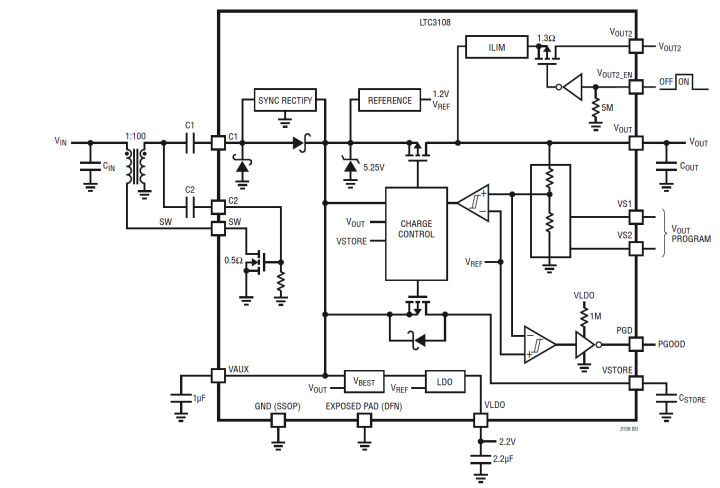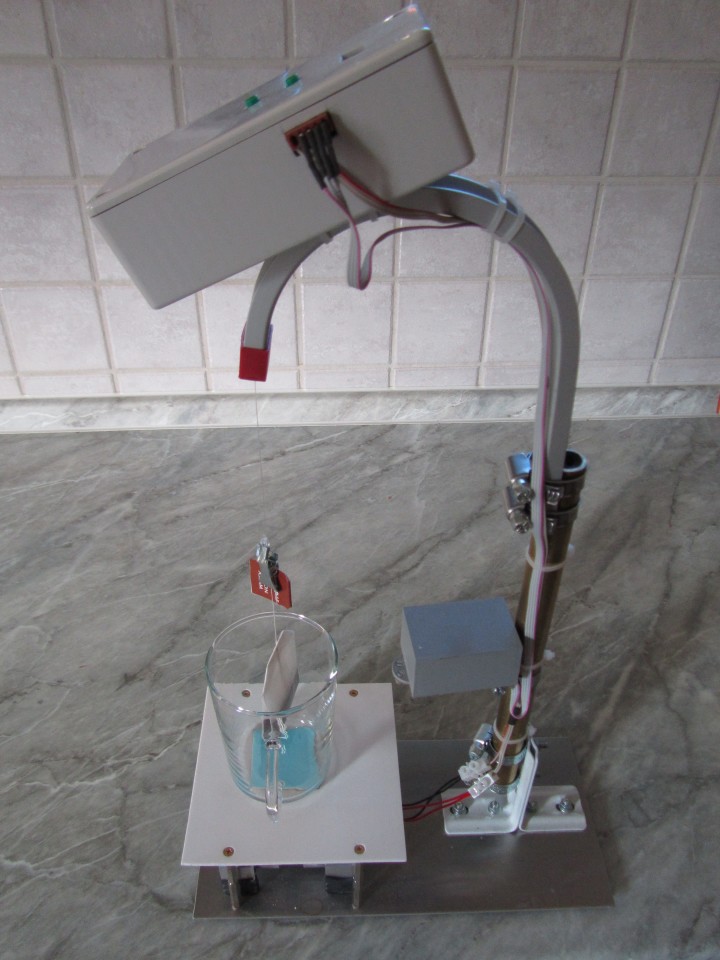Thermoelectric Tea Timer
on
By Lothar Göde (Germany)
Some time ago, I read an article about energy harvesting. This technology was new to me and I found it very interesting and exciting at the same time. I received an Energy Harvesting kit through an organization that, among other things, provides kits to youngsters to introduce them to elementary electronics as part of their school curriculum. The core of the kit is the LTC3108 integrated circuit from Linear Technology [1] (today Analog Devices). I was fascinated by the fact that a direct voltage of just 20 mV, a level no normal transistor or MOSFET can work off, produces a much higher voltage suitable for powering a microcontroller, for example. The LTC3108 is designed to draw its input voltage from the temperature difference of a thermoelectric generator (TEG).
Thermoelectric generator
A thermoelectric generator can generate electrical energy from a heat difference or conversely generate a heat difference by supplying electrical energy. A TEG consists of two isotropic, homogeneous semiconductor materials with different (p-,n-) doping (Figure 1). The most popular application of the thermoelectric or Peltier effect are inexpensive coolers plugged into the cigarette lighter in the car and draining the car battery very quickly (without the beer really getting cold).

But it also works the other way around: the reverse of the Peltier effect is the Seebeck effect. An existing heat difference gets converted into electrical energy. The voltage generated depends on the properties of the thermoelectric materials and, of course, the temperature difference. By the way, a thermoelectric generator operates similar to a thermovoltaic generator: the current tapped is selected so that the terminal voltage drops only slightly, but the output is maximum (maximum power point – MPP).
Hot tea, cold tea?
While experimenting with the interesting educational package, I often drank tea on the side. But then, in your enthusiasm you usually forget the teacup and your tea gets cold with a bitter taste. To solve the problem, I asked myself: ‘Is it possible to capture or convert so much energy from the temperature difference of a tea glass filled with boiling water and its environment, for an energy-saving electronic or electromechanical device to lift the tea bag out of the tea glass at the end of the intended brewing time?’
To answer the question I first had to carry out some experiments with the TEG. For the effective heat dissipation from the cold plate of the TEG, an aluminium heatsink from a CPU cooler from the hobby stash was used. However, you have to try different tea glasses and heat conducting materials to achieve optimal heat transfer. By solving these problems, in five minutes of brewing time you can harvest enough energy from a tea glass containing boiling water for the LTC3108 to reliably charge a 2200-μF electrolytic capacitor (CSTORE in Figure 2)… and for the control electronics to do its job!

Conveyor mechanism
What can be done with the harvested energy? Of course, ‘power-consuming’ functions are out of reach, and all parts of a tea timer must use energy sparingly. First, the mechanics: a tea glass is placed on the TEG, the tea bag (or tea ball) is lowered manually into the cup and the tea bag label is connected to the ‘lift mechanism’ wire through a mini clamp.
With a traditional circuit, you could now simply equip the lift mechanism with a motor that pulls the bag out of the brew. But that doesn't make sense here. Instead, as shown in Figure 3, the wire is both guided and equipped with a small counterweight (slightly heavier than a tea bag). In this way we harvest further energy, which is gravity. Since the counterweight is heavier than the tea bag, it must be locked by a bolt blocking the counterweight’s path by spring force as soon as a certain position is reached. The bolt is released electromagnetically with a single electric pulse. Consequently, there is no need for much current to be supplied over a longer period of time.

For the bolt lock, I modified a relay and fixed the bolt to the contact set of the relay. There are also special lift magnets which could be used here. So that the tea does not splash when lifting the bag, I had to equip the counterweight with a rubber damper.
The microcontroller as timer and driver
Because we use energy so sparingly for the mechanism, we can allow ourselves some luxury at the control centre of the tea timer: a microcontroller type ATmega169PA from Atmel. The ATmega169PA has a built-in LCD controller, which allows the convenient connection of a display to indicate the brewing time. It is even actually more energy efficient to use a hardware function of a controller than to emulate this function via software.
Boiling water is now poured into the tea glass to generate electrical energy. As soon as the Energy Harvesting circuit provides the supply voltage for the microcontroller, the brewing time flashes on the display. It takes about 30 seconds for the display to appear. Most teas have to brew for 5 minutes, so the default value is 4 minutes and 30 seconds.
Two buttons are connected to the microcontroller allowing the brew time to be set. If none of the buttons is pressed for about 12 seconds, the display stops flashing and the set brewing time is counted down per second.
The acoustic signal of a piezo beeper sounds a few seconds before the brew time expires. This should be an indication that the tea is ready. When the brew time has finally expired, the microcontroller sends a short signal to the relay coil, which releases the locking bolt so that the counterweight pulls the tea bag out of the tea glass in a damped movement.
The acoustic signal generated by the piezo signal transmitter must be slightly delayed at the end of the brewing time in order to compensate for the energy lost in the remaining time, so that sufficient electrical energy is available for actuating the relay coil. If the acoustic signal is ignored, the tea timer does not halt; further acoustic signals follow every minute. This alarm can be switched off by pressing a button. That should not be necessary though, because if you take the hot cup from the TEG, the power supply disconnects in no time anyway.
Conclusion
Designing a circuit in such a way that it works with the tiny amount of energy obtained through harvesting is a major challenge. This applies not only to the hardware design, but also particularly the energy management when creating the firmware. For example, the firmware had to be optimized in such a way that a minimum current is required when setting the brew time by pressing the buttons, so that the supply voltage for the microcontroller does not fail. However, that’s exactly the purpose of such experiments!
The thermoelectric tea timer can also be extended with a radio module (Bluetooth Low Energy; BLE) to send a message to a smartphone when your ‘cuppa’ is ready. A power-saving stepper motor could also be used to lift the tea bag out of the tea glass.
Even if it does not look much in the photo showing the prototype (Figure 4), the thermoelectric tea timer represents a distinct high-tech device through the use of modern energy harvesting technology. That’s in stark contrast with many commercial products performing a similar task, but using a downright old-fashioned approach. Annoying, mandatory tasks such as exchanging or charging batteries no longer exist. Since no batteries are used, no chemical substances can spill. The ‘T-T-T’ is maintenance-free, except for occasional cleaning of course. No dangerous voltages are generated, obviating the need for protective measures. The T-T-T is unique!

Publishers’ Note: This project was previously printed in Reichelt Elektronik Magazin.
Want more great Elektor content like this? Then take out an Elektor Membership today and never miss an article, project, or tutorial.


Discussion (0 comments)